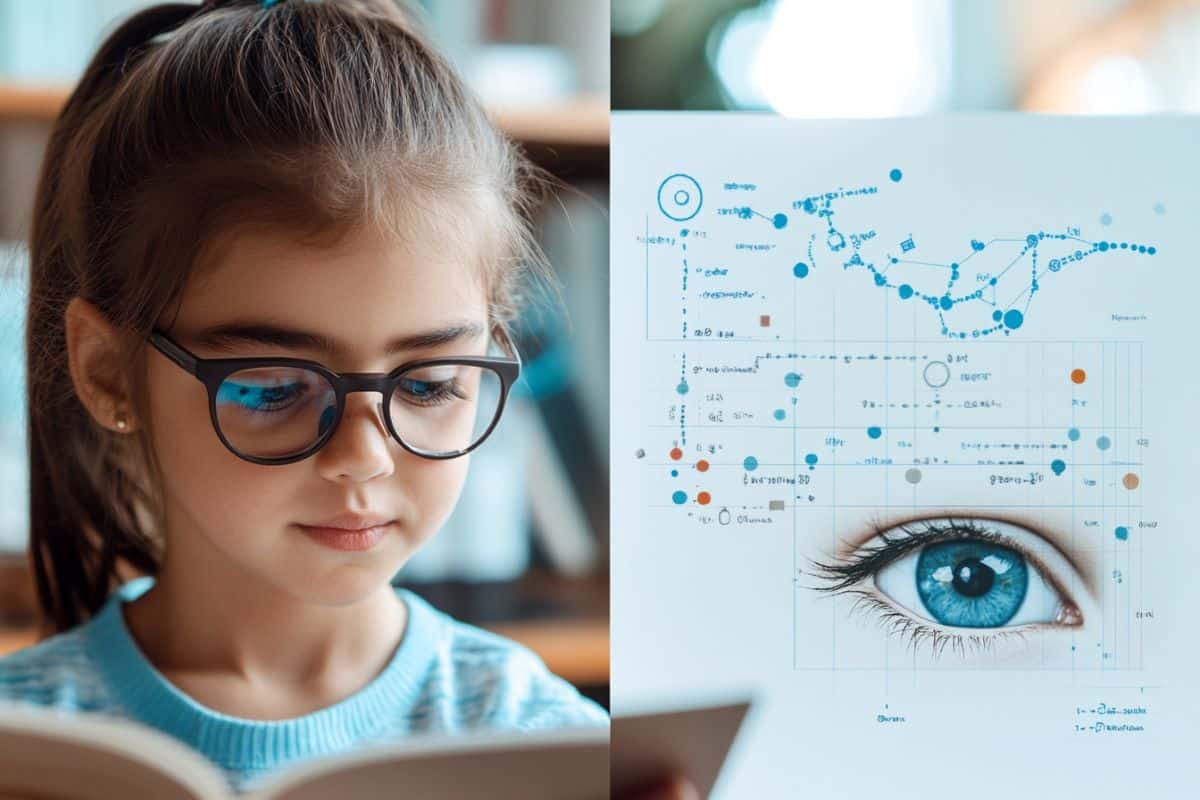Summary: New research demonstrates that high-add multifocal contact lenses significantly slow myopia progression in children, with benefits that persist even after discontinuation. The lenses, designed to slow eye growth and reduce long-term myopia-related risks, showed no rebound effect after treatment stopped.
Findings from the BLINK2 Study indicate that starting treatment early and continuing until late adolescence is a promising strategy. Compared to other treatments like atropine drops, multifocal lenses offer durable, safer control over myopia progression.
Key Facts:
- Long-Lasting Effects: Benefits from multifocal lenses persist without rebound after discontinuation.
- Early Start Advantage: Starting treatment at younger ages results in greater long-term benefits.
- Safe and Effective: Unlike other treatments, multifocal lenses don’t accelerate eye growth post-treatment.
Source: University of Houston
Capping ten years of work to stem the tide of nearsightedness, David Berntsen, Golden-Golden Professor of Optometry and chair of Clinical Sciences at the University of Houston College of Optometry, is reporting that his team’s method to slow myopia not only works – but lasts.
The original Bifocal Lenses In Nearsighted Kids (BLINK) Study showed that having children with myopia wear high-add power multifocal contact lenses slows its progression. Now, new results from the BLINK2 Study – that continued following these children – found that the benefits continue even after the lenses are no longer used.
“We found that one year after discontinuing treatment with high-add power soft multifocal contact lenses in older teenagers, myopia progression returns to normal with no loss of treatment benefit,” reports Berntsen in JAMA Ophthalmology. The study was funded by the National Institutes of Health’s National Eye Institute with collaborators from the Ohio State University College of Optometry.
In focus: A major issue
Leading the team at the University of Houston, Berntsen takes on a significant challenge. By 2050 almost 50% of the world (5 billion people) will be myopic. That means if you’re not nearsighted and wearing glasses, the person sitting next to you may be.
Myopia is associated with an increased risk of long-term eye health problems that affect vision and can even lead to blindness.
From the initial study, high-add multifocal contact lenses were found to be effective at slowing the rate of eye growth, decreasing how myopic children became.

Because higher amounts of myopia are associated with vision-threatening eye diseases later in life, like retinal detachment and glaucoma, controlling its progression during childhood potentially offers an additional future benefit.
“There has been concern that the eye might grow faster than normal when myopia control contact lenses are discontinued. Our findings show that when older teenagers stop wearing these myopia control lenses, the eye returns to the age-expected rate of growth,” said Berntsen.
“These follow-on results from the BLINK2 Study show that the treatment benefit with myopia control contact lenses have a durable benefit when they are discontinued at an older age,” said BLINK2 study chair, Jeffrey J. Walline, associate dean for research at the Ohio State University College of Optometry.
Eye science
Myopia occurs when a child’s developing eyes grow too long from front to back. Instead of focusing images directly on the retina—the light-sensitive tissue in the back of the eye—images of distant objects are focused at a point in front of the retina. As a result, people with myopia have good near vision but poor distance vision.
Single vision prescription glasses and contact lenses can correct myopic vision, but they fail to treat the underlying problem, which is the eye continuing to grow longer than normal. By contrast, soft multifocal contact lenses correct myopic vision in children while simultaneously slowing myopia progression by slowing eye growth.
Designed like a bullseye, multifocal contact lenses focus light in two basic ways. The center portion of the lens corrects nearsightedness so that distance vision is clear, and it focuses light directly on the retina.
The outer portion of the lens adds focusing power to bring the peripheral light into focus in front of the retina. Animal studies show that bringing light to focus in front of the retina may slow growth. The higher the reading power, the further in front of the retina it focuses peripheral light.
BLINK once…then twice
In the original BLINK study, 294 myopic children, ages 7 to 11 years, were randomly assigned to wear single vision contact lenses or multifocal lenses with either high-add power (+2.50 diopters) or medium-add power (+1.50 diopters). They wore the lenses during the day as often as they could comfortably do so for three years. All participants were seen at clinics at the Ohio State University, Columbus, or at the University of Houston.
After three years in the original BLINK study, children in the high-add multifocal contact lens group had shorter eyes compared to the medium-add power and single-vision groups, and they also had the slowest rate of myopia progression and eye growth.
Of the original BLINK participants, 248 continued in BLINK2, during which all participants wore high-add (+2.50 diopters) lenses for two years, followed by single-vision contact lenses for the third year of the study to see if the benefit remained after discontinuing treatment.
At the end of BLINK2, axial eye growth returned to age-expected rates. While there was a small increase in eye growth of 0.03 mm/year across all age groups after discontinuing multifocal lenses, it is important to note that the overall rate of eye growth was no different than the age-expected rate. There was no evidence of faster than normal eye growth.
Participants who had been in the original BLINK high-add multifocal treatment group continued to have shorter eyes and less myopia at the end of BLINK2. Children who were switched to high-add multifocal contact lenses for the first time during BLINK2 did not catch up to those who had worn high-add lenses since the start of the BLINK Study when they were 7 to 11 years of age.
By contrast, studies of other myopia treatments, such as atropine drops and orthokeratology lenses that are designed to temporarily reshape the eye’s outermost corneal layer, showed a rebound effect (faster than age-normal eye growth) after treatment was discontinued.
“Our findings suggest that it’s a reasonable strategy to fit children with multifocal contact lenses for myopia control at a younger age and continue treatment until the late teenage years when myopia progression has slowed,” said Berntsen.
For more information, visit the NEI webpage on myopia.
Funding: The study received support from NIH grants UG1 EY023204, EY023206, EY023208, EY023210, P30 EY007551, UL1 TR002733.
About this visual neuroscience research news
Author: Laurie Fickman
Source: University of Houston
Contact: Laurie Fickman – University of Houston
Image: The image is credited to Neuroscience News
Original Research: Closed access.
“Axial Growth and Myopia Progression After Discontinuing Soft Multifocal Contact Lens Wear” by David Berntsen et al. JAMA Opthalmology
Abstract
Axial Growth and Myopia Progression After Discontinuing Soft Multifocal Contact Lens Wear
Importance
For myopia control to be beneficial, it would be important that the benefit of treatment (slowed eye growth) is not lost because of faster than normal growth (rebound) after discontinuing treatment.
Objective
To determine whether there is a loss of treatment effect (rebound) after discontinuing soft multifocal contact lenses in children with myopia.
Design, Setting, and Participants
The Bifocal Lenses in Nearsighted Kids 2 (BLINK2) cohort study involved children with myopia (aged 11-17 years at BLINK2 baseline) who completed the BLINK Study randomized clinical trial.
Enrollment was from September 2019 through January 2021; follow-up was completed in January 2024. In the BLINK2 Study, all children wore high-add (+2.50 diopter [D]) multifocal soft contact lenses for 2 years and single-vision soft contact lenses during the third year to determine if rebound occurred.
Exposure
High-add multifocal soft contact lenses and single-vision soft contact lenses.
Main Outcomes and Measures
Eye length (optical biometry) and refractive error (cycloplegic autorefraction) were measured annually.
Results
Of 248 participants enrolled in BLINK2, 235 completed the study. The median age at the baseline visit was 15 years (range, 11-17 years); 146 participants (59%) were female, and 102 (41%) were male.
At baseline for BLINK2, mean (SD) axial length and spherical equivalent refractive error were 25.2 (0.9) mm and −3.40 (1.40) D, respectively. After participants switched from multifocal to single-vision contact lenses, axial elongation increased by 0.03 mm per year (95% CI, 0.01 to 0.05) regardless of their original BLINK treatment assignment (P = .81).
There was also an increase in myopia progression after switching to single-vision lenses of −0.17 D per year (95% CI, −0.22 to −0.12) that did not depend on the original BLINK treatment assignment (P = .57).
There continued to be a difference in axial length and refractive error throughout BLINK2 based on the BLINK Study treatment assignment with the original high-add group having shorter eyes and less myopia than the original medium-add (+1.50 D) and single-vision groups.
Conclusions and Relevance
The BLINK2 Study found no evidence of a loss of treatment effect after discontinuing multifocal contact lenses in older teenagers. These data suggest eye growth and myopia progression returned to faster but age-expected rates and support continuing multifocal lenses until cessation of elongation and progression.






